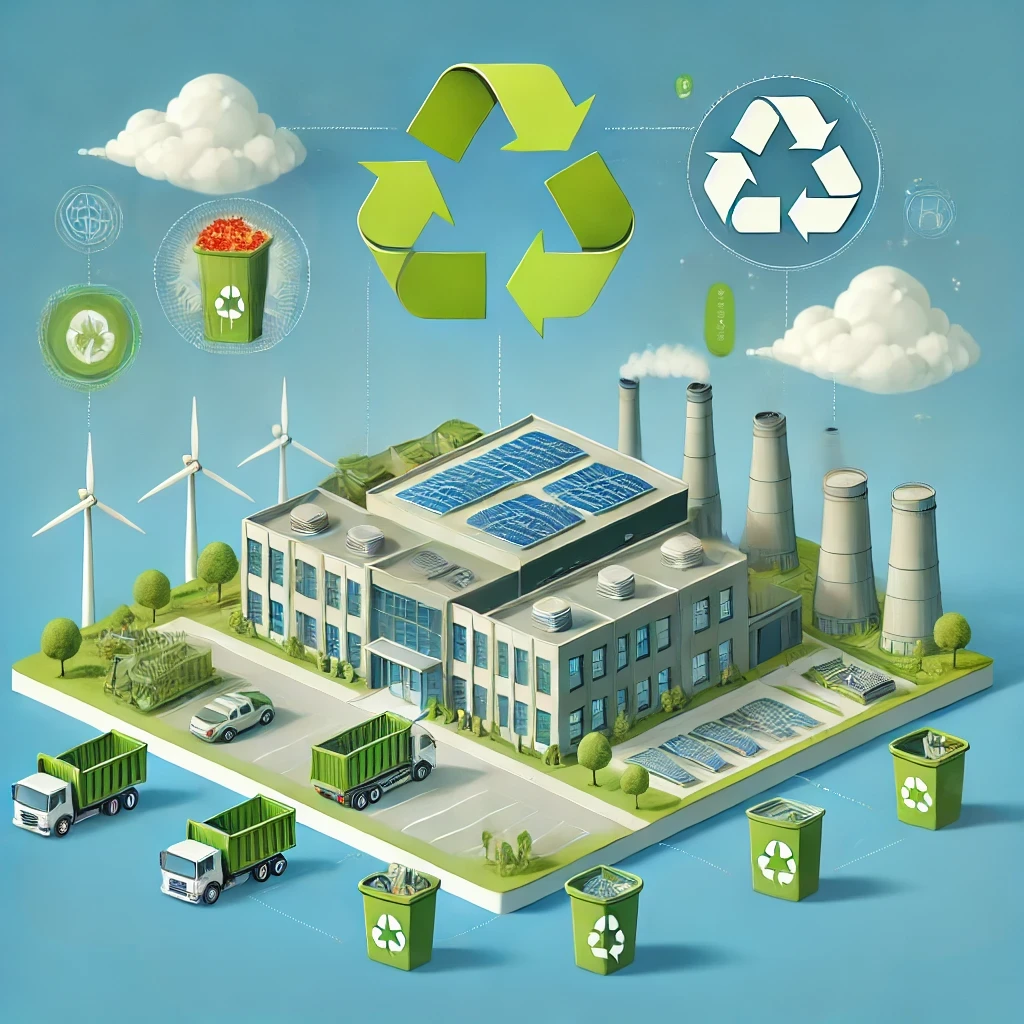Effective waste management and recycling are essential components of sustainable construction and building operations. The Leadership in Energy and Environmental Design (LEED) certification integrates waste reduction strategies to minimize construction, demolition, and operational waste. Within the Materials and Resources (MR) category, LEED encourages waste diversion, recycling, and responsible material use, helping to conserve resources, reduce landfill waste, and lower a building’s carbon footprint.
Waste Management’s Role in LEED
LEED promotes waste reduction and resource efficiency by aligning projects with circular economy principles. The core objectives of LEED’s waste management credits include:
Minimizing Waste Generation – Encouraging efficient design and material use to limit waste production.
Diverting Waste from Landfills – Implementing recycling and reuse programs to reduce landfill dependency.
Sustainable Procurement Selecting low-impact, recycled-content materials for construction.
Tracking and Reporting – Documenting waste diversion and recycling efforts for transparency and accountability.
Key LEED Credits for Waste Management and Recycling
LEED evaluates waste management performance through several credits within the Materials and Resources (MR) category:
1. Construction and Demolition Waste Management (MR Credit)
Encourages projects to develop a waste management plan for tracking and diverting construction waste.
Rewards projects diverting at least 50% (1 point) or 75% (2 points) of non-hazardous waste from landfills.
2. Storage and Collection of Recyclables (MR Prerequisite)
Requires buildings to provide dedicated recycling spaces for materials like paper, plastics, glass, and metals.
Ensures easy recycling access for occupants and facility managers.
3. Building Life-Cycle Impact Reduction (MR Credit)
Promotes the reuse of salvaged materials and whole-building reuse to minimize demolition waste.
Encourages projects to reduce reliance on new raw materials through material recovery strategies.
4. Waste Performance Monitoring (LEED O+M)
Focuses on ongoing waste tracking in operational buildings.
Encourages waste audits to optimize recycling efforts and improve diversion rates.
Benefits of Waste Management in LEED Projects
Implementing LEED-compliant waste management offers a range of environmental, economic, and social benefits:
Environmental Advantages:
Reduces landfill waste and greenhouse gas emissions.
Promotes recycling and material conservation.
Lowers pollution from manufacturing and transportation of new materials.
Economic Benefits:
Lowers waste disposal costs through landfill diversion.
Improves material efficiency, reducing procurement expenses.
Enhances property value by strengthening sustainability credentials.
Social and Health Benefits:
Creates healthier communities by reducing waste-related pollution.
Encourages occupants and stakeholders to adopt sustainable behaviors.
Supports waste reduction awareness through active participation.
Strategies for LEED Waste Management Compliance
Projects pursuing LEED certification can implement effective waste management strategies to maximize sustainability impact:
Develop a Waste Management Plan – Define strategies for reuse, recycling, and waste diversion.
Use Modular & Prefabricated Construction – Reduces on-site material waste through precise manufacturing.
Select Sustainable Materials – Prioritize high recycled content, low embodied carbon, and certified eco-friendly materials.
Implement Source Separation Recycling – Organize dedicated collection areas for effective material sorting.
Conduct Waste Audits – Regularly analyze waste streams to enhance diversion rates.
Engage Stakeholders – Educate contractors, employees, and occupants on waste reduction practices.
Conclusion
LEED’s waste management and recycling approach is critical for reducing environmental impact, promoting resource conservation, and optimizing operational efficiency. Whether in new construction or existing buildings, integrating sustainable waste practices leads to lower costs, improved sustainability performance, and long-term environmental benefits.
By prioritizing waste reduction, recycling, and responsible material selection, LEED projects contribute to the circular economy and support global sustainability goals. As green building practices evolve, effective waste management remains a fundamental aspect of sustainable design and operation.

